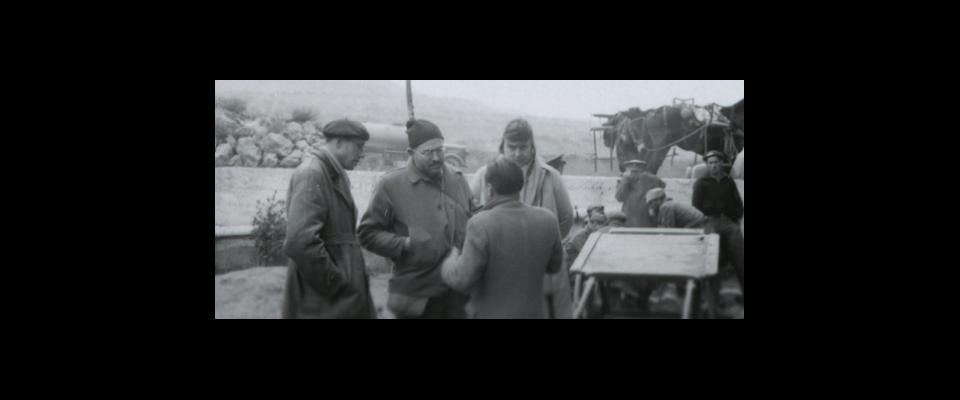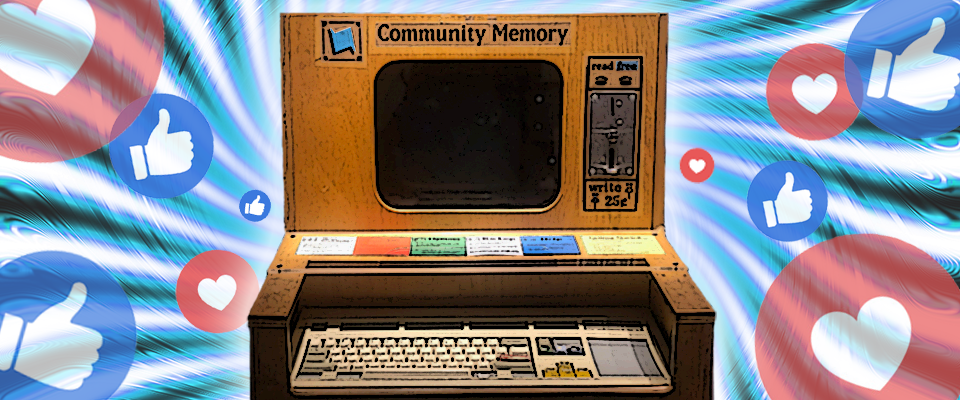China’s body image shifts from cultural revolution to sexual revolution.
There came a startling moment when everything shifted. A man carrying two plastic bags, one in each hand, stood directly in the path of a column of armored tanks, effectively preventing them from proceeding down the avenue toward Tiananmen Square in Beijing.
The day before, on June 4, 1989, hundreds of pro-democracy students and workers had been gunned down in and near the square. The image of “Tank Man,” as he’s now called, stays indelibly in the mind. Some have said his name is Wang Weilin, a 19-year-old student, whereabouts unknown. There is speculation that he either was executed or is living in exile in Taiwan. Whoever he is, wherever he is now, dead or alive, it is certain that for a brief moment he managed to stop the machines with just his body. This unknown rebel, unarmed, stood up against the awesome power of the state and, as the world watched, gained something priceless in return: He liberated his body from the collective, from being subservient to the ideological machine, and opened the floodgates to a next world.
Although direct political confrontation failed, a new sideways rebellion began in the cultural and economic sphere, one that has succeeded. If Mao launched the cultural revolution in 1966 to be rid of “liberal bourgeois” and to continue the revolutionary class struggle, the bourgeois liberals have struck back. The real cultural revolution, stoked by individual desires and ambitions, is happening now. “The level of societal openness and individual freedom now enjoyed by the people in China was unthinkable to the protesters at the Tiananmen Square,” says Ling-chi Wang, professor emeritus of Asian American Studies at Berkeley.
As the Olympic Games draw near, it is not ideology or collective yearning that asserts itself in the Middle Kingdom, but the physical self coming to full consciousness. The civilization known for Confucian morals, Taoist mysticism, acupuncture, tai chi, martial arts—radically different ways of looking at the self in relationship with the cosmos—has wholeheartedly embraced Western culture and mores. “Economic and educational opportunities, readily available telecommunications and the Internet have made the people of China highly mobile, and quite well informed,” says Wang, but also “more individual-centered and therefore, less committed to traditional extended family and Confucian social ethics.” Ancestral worship, though allowed under communism, is on the wane as many now flock to the temple of the body. The We of the old traditional world of clanship, of self defined by proper behavior and relationships within the collective, is ceding to the Me of the new generation, one defined by sex.
Premarital sex is now widely practiced. In a 2007 poll by Renmin University of China, more than half the Chinese surveyed in ten provinces found premarital sex acceptable. Only 12.8 percent said it was immoral. In a Beijing study conducted by Li Yinhe, a sociologist at the Chinese Academy of Social Sciences, nearly three-quarters of residents polled said they had sexual relations before marriage, compared with just 15.5 percent in 1989, the year of the massacre. And the Internet, to which 200 million now have access in China (according to PC World), has flung open the bedroom door. While the government cracks down on online political dissent, the new socialism allows for a great deal of personal expression.
Women bloggers are becoming famous for discussing their sex lives online. One even taped the sounds of her lovemaking, and managed to crash the host server when too many tried to listen at the same time. The biggest celebrity sex scandal of late on the Internet (what now is called Sexy Photo Gate) features Edison Chen, a young Hong Kong hip-hop artist and actor. In some 1,300 explicit photos, Chen, a heartthrob featured in People magazine’s 2006 “Sexiest Man Alive” issue, is seen having sex with over a half dozen Chinese starlets. So far, over 30 million page views of the images have caused Chinese authorities to wonder about the effectiveness of the firewall.
Along with sexual freedom is the celebration of the self. The proliferation of spas, sports clubs, fashion magazines and shows, beauty products, massages, dance clubs, love hotels, talk shows about sex, underground porn, and obsession with athletes and movie and pop stars all speak to the glorification of the body—in stark contrast to the cold war era, when having too big a mirror in one’s home or even wearing makeup in public could be deemed antirevolutionary. Most telling is the growth of the cosmetic surgery industry. In recent years, more than 10,000 clinics have opened. The number of surgeries for straighter noses, double eyelids, and breast augmentation would suggest that a fair number of Chinese with disposable incomes are rushing for extreme makeovers.
This new self—fit, augmented, overtly sexual, and on display—contrasts dramatically with Chinese body images of the past. “The ancient Confucian tradition was criticized for its contempt for physical activity and respect for the intellect,” notes Susan Brownell, author of Beijing’s Games: What the Olympics Mean to China. “‘Those who work with their brains rule, those who work with their brawn are ruled,’ a saying from Mencius, has been used for a century to illustrate the traditional Confucian aversion to physical exercise, including sports.”
In ancient Rome and Greece, the naked body was sculpted to perfection and generally glorified. During the Renaissance, the human form was rendered not only anatomically correct but profound in refined drawings and paintings. In China, though, the body was kept hidden until the dawn of the 20th century. To be sure, there were erotic images in ancient China, but they were created during the Taoist-dominated eras as manuals to educate young married couples. Far more typical were the paintings that depict upper-class men and women perched on carved wooden chairs, their hands hidden in the sleeves of beautiful brocades, their faces stoic, inexpressive, like peg dolls. To project a cold, outward face was akin to moral rectitude.
“The human body in traditional China was not seen as having its own intrinsic physical glory,” says China scholar Mark Elvin, author of Changing Stories in the Chinese World. Beauty was not dependent on sexual characteristics and attributes, he says, but on artifice and ornamentation—a painted face, silk brocade, the jade bracelet that dangles from the wrist—or alteration such as the painful and crippling binding of feet.
Contacts with the West changed all that. The presence of the pale-skinned, blue-eyed gwai lo, “foreign devil,” forced a new kind of self-awareness on the East. Take the beautiful cheongsam, a body-hugging piece worn by Chinese women. Developed in cosmopolitan Shanghai around 1900, it originated from its opposite, the qipao—a baggy and loose-fitting dress once meant to deemphasize and conceal the wearer’s figure, that was transformed in the final years of China’s last dynasty to reveal curves, waist, bosom, and a lot more skin.
Along with the colonial-era concept of the body as an object of admiration came a more insidious metaphor perpetuated by Westerners: the “sick man of East Asia.” It was reinforced by caricatures of the frail, opium-addicted Chinese man with a long pigtail. Chinese defenselessness carved a deep wound in the collective psyche. Not surprisingly, the Boxer Rebellion, a peasant-based uprising in 1899–1901 against foreign influence, had at its heart the belief that the body can achieve invincibility. The rebels were practitioners of martial arts, which they believed could help turn their bodies into armor, impervious to bullets. That the rebellion failed and the bullets did pierce their flesh did not extinguish this collective longing for inviolability. The theme of Chinese martial arts as the antidote to Western conquerors’ firepower continues to inform and inspire many martial arts films, novels, and comic books.
Under Mao, the body was once more inducted to represent the nation. In propaganda posters that have become collectors’ items, workers are depicted as strong and square-jawed; athletes are lithe and agile. Sports became synonymous with modernity. A strong body was reflective of national strength and was seen as necessary for unity. The self was in service to a larger cause, and everyone moved together wearing Mao jackets—a sea of blue and gray. The body, subdued by ideology, was not yet free.
Freedom arrived in the late 1980s, and its symbol was that singular image of “Tank Man” engaging in a brazen and courageous act of self-expression. Once unleashed, though, freedom created a ripple effect (more like a wave) that surged through the culture and threatened to wash away hundreds of years of social mores—the piety of Confucianism, the humiliation of Western imperialism, the righteousness of communism under Mao, all variants of a single unifying characteristic: shame.
“Lead the people with excellence and put them in their place through roles and ritual practices, and in addition to developing a sense of shame, they will order themselves harmoniously,” Confucius said in his Analects. Shame, in other words, binds the tongue and inhibits behavior. Those who seek to change the old world order, on the other hand, learn to be shameless. Lewis Hyde, in his book Trickster Makes This World: Mischief, Myth, and Art, noted that artists who seek to change the conversation of the culture refuse “their elders’ sense of where speech and silence belong, they do not so much erase the categories as redraw the lines.”
Ang Lee’s movie Lust, Caution is a good example of this realignment. In it Tony Leung, a merciless Japanese informant in World War II Shanghai, begins his relationship with Tang Wei, a nationalist, by whipping and raping her. She, in turn, uses her body to get at him. Theirs is a carnal dance toward the gates of hell. Sex is as much the story’s forward arc as the movie’s assassination plot. Some movie critics have cattily renamed the movie Caution: Lust! but that is the warning that Ang Lee’s movie propounds. Both insider and outsider, an émigré from Taiwan to the United States, Lee has a vision that encompasses the Far East and the Wild West, the sacred and profane. He reimagines the past with his movies; he shows copulating bodies to the masses and at the same time warns them against unchecked passions. On top of it all, he spurs the conversation in China about obscenity and about what is and isn’t proper behavior.
Consider, too, the controversial body art showcased in Shanghai in 2005, in which traditional brush paintings were drawn on naked models. Images of mountains and rivers, of peonies and songbirds, suddenly migrated from the familiar old canvas onto a moving one made of human skin. Most compelling was the female model who had a blue cheongsam with white crested wave motif painted on her body. She is both beautifully clothed and astonishingly naked—and a literal transfiguration of the past.
Indeed, that old sea of green and gray Mao jackets has been rapidly transformed into a field of a hundred thousand flowers blooming, and China is going through a cultural renaissance.
In the age of globalization, the more rigid the politics, the more mellifluously culture can serve as counterpoint, forcing change. Protesters in Tiananmen Square may have failed in their direct confrontation with the state, but in their wake rises a culture all at once playful, shameless, and disruptive of the past—and the effect is that the nation, unclothed at last, is losing not only its inhibition but also its tongue.




















